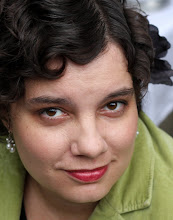
Stuff: Compulsive Hoarding and the Meaning of Things
By Randy O. Frost and Gail Stehele
Stuff is an easy to read explanation of the author’s research in to hoarding, why it happens, the psychology behind hoarding, and stories about their attempts to treat people with hoarding problems. Hoarding happens in many cultures and has various causes. "Objects in a hoard may appear to be without value to an observer, but someone with a hoarding problem would hardly describe them as worthless."
Reading this book is a little voyeuristic, just as watching the shows about hoarding is voyeuristic. You look on with disgust and piqued interest. What you are thinking the whole time is: could this ever happen to me? Would I know it? How can these people live this way? Why?
What can you tell about a person based on what they own? Do you own your stuff or does it own you? Throughout the YOMD – year of making do – we have been trying to keep from acquiring new stuff but it is hard. The book describes three themes among ownership, found through research by Lita Furby. The possessions: 1. allows the owner to accomplish something; 2. provides a sense of security; or 3. become part of an individual’s sense of self. My possessions largely fall into number one, but some are outliers. While reading the book I kept thinking about what I hoard. Books and purses. I love them both. Maybe shoes too. These are the things that are hardest for me to get rid of. I love them. I love what they represent: a place to store other belongings when I am not at home. While thinking about the book and setting some purses "free" I focused on one purse. It is blue, a good size, and I have used it a total of 4-5 times. I have had it 10 years. I originally bought it for my mom before she died. She never used it as far as I know. But every time I look at the purse, I remember her. I think about her, so for that reason, I keep it. There types of thought processes are explored over and over in the book.
What all hoarders have problems doing, however, is making decisions. They can’t decide what to do with stuff and often do nothing. I have considered the purse often and decided to keep it.
While reading the book I was reminded of that book I read a few years ago: Collections of Nothing, where the author/professor collected lots of nothing: cereal boxes, wrappers, etc. His stuff was all organized and catalogued though…well he said it was. I did not actually see any pictures. Stuff states that the "boundary between normal collecting and hoarding" is the distress the hoard causes. The Collections of Nothing author did admit that his collecting/hoarding had caused problems in his family and led to his divorce.
That said all of the hoarders profiled in Stuff live in huge messes. They have small “goat trails” in their homes to move around, stuff piled high around them. One woman did not even recognize photos of her home! So did the Collections of Nothing author really have his collections organized? Or was he a hoarder too?
One book that helped me get rid of a lot of baggage, both internal and external, was 100 Ways to Simplify Your Life. I try to remind myself that someone else could use the items I don’t need. Keeping the items is wasteful. And our apartment is small!
I would recommend Stuff. It was very interesting and brought up a lot of things I had not considered before.


No comments:
Post a Comment